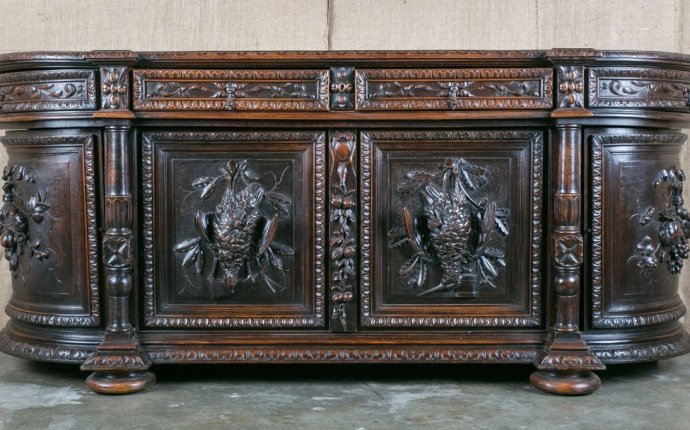
French antiques
“Always I am thinking about the guy who built the spiral staircase. It was necessary to get up, and so he built it for his purposes. How would he feel if he were to see it today, a piece of art, a sculpture in an American Living room.”Jan de Luz By necessity and by design, the architecture of an environment is usually one reliable indicator of the socioeconomics of the environment. Nowhere is this more acute than across America, where the price and prestige of the home serve as a harbinger of wealth or lack thereof, and, on occasion, culture.
During the first half of twentieth-century America, widespread international immigration and an influx of residents from the country created an urban populous characterized by materialistic and consumer culture. The developer response to the glut on the market was to build up as opposed to out, creating a cityscape that scraped the sky and paved the way to a stifled existence.
To some, it was progress. Others interpreted the development of skyscrapers and monolithic cities as a symptom of the need for revolutionary change in the housing conditions and architecture of America. One resolutions was to expand to the outskirts of the city, not as far afield as the country, but to an intermediary sub-urban setting that would enable residents to take advantage of the arts and culture, services and employment opportunities of the city while maintaining a detached and more personal existence just outside the city limits.
One idea was to import a kind of “English garden city” to the States. And, in many case, it was successful, with the rise of independent homes in expansive, garden settings. But, by and large, it also created a path to homogeneous environments, both culturally and architecturally.
This was particularly evident in the advent of residential ‘tract” neighborhoods, where “garden cities” morphed into sterile, uniform suburbs characterized by shared fencing, identical facades, regulation landscaping and limited paint choices. These production homes, constructed by one builder per project and mass marketed to the middle and upper middle classes, seemed to reflect architecture’s role in the development of civilization or, at least, the class system. It may have moved the people out of the city, but the city came bumbling after them. The invariable skyscrapers had slipped into a horizontal plane.
Amid the entropy of American architecture still lurked the few magnificent, independently owned and built homes, a symbol and reminder of a meritocracy within a democracy. The classic architecture of the antebellum mansion, the organic nature of the southwest adobe, the ranch style f the Hollywood elite and sculptural oddities of the nouveau riche were, at least, an indication of hope for autonomous architecture in an otherwise formless environment.
Once again, architecture reflects the art and attitudes of its inhabitants. At the turn of another century, the penchant for homes of a more provincial nature speaks to a shift in perspective that marks a return to value, to the homescape, to a nostalgia for a kinder, simpler time when the hearth and the home, the furnishings and the foundation were uniquely designed and crafted by hand.
It is those elements, often found locally but seemingly more precious from abroad that Americans have begun to collect like foreign coins to incorporate into the architecture of their homes. It may be functional; it may simply provide form, that point where art and architecture meet to create atmosphere.
It’s called architectural salvage, the recycling of used features and fixtures from older building, many antiquated but not necessarily outmoded, providing just the right degree of anachronism in an otherwise contemporary home.
Those with a penchant for history or simply a preference for the quality and craftsmanship, materials and style or perhaps the cultural cache of antique architectural elements are implementing doors and windows, mantels and headers, stairways and flooring, fountains and fixtures into the remodel or new construction of their homes.
Some people just like to conserve. Whatever the appeal, architectural salvage may be used in the restoration of older homes or merely introduced as a decorative element which may not function, but it works.
While America boasts a 200-year history from which to recover architectural treasures, many aficionados seek elements twice as old and all the more precious for their collections of antique architecture.
While the American general public may not be formally educated on French or Italian style in architecture, they do understand the appeal, they do recognize the beauty in antique salvage, they do appreciate the quality, the mystery and the effect it can have when juxtaposed with contemporary architecture.“The American culture is still very young, but the American people are widely traveled, ” said Jan de Luz, who has been importing Mediterranean architectural salvage and antiques to the States for since the mid-90’s. “Americans have spent the last century traveling, becoming exposed to the antiquity of Europe and increasing their vision of introducing older elements to a newer country. The irony and intrigue is not lost on them.”
While the American general public may not be formally educated on French or Italian style in architecture, they do understand the appeal, they do recognize the beauty in antique salvage, they do appreciate the quality, the mystery and the effect it can have when juxtaposed with contemporary architecture.
“During the last century, ” Jan de Luz said, “demand and, therefore, production has accelerated to the point where, in order to keep pacer, we have to follow a standard, to mass-produce our architectural elements. The result is that everything looks the same. To incorporate elements of antiquity into the house is to lend a personal touch, to create a relationship between the inhabitants and the home, to create heritage.”









